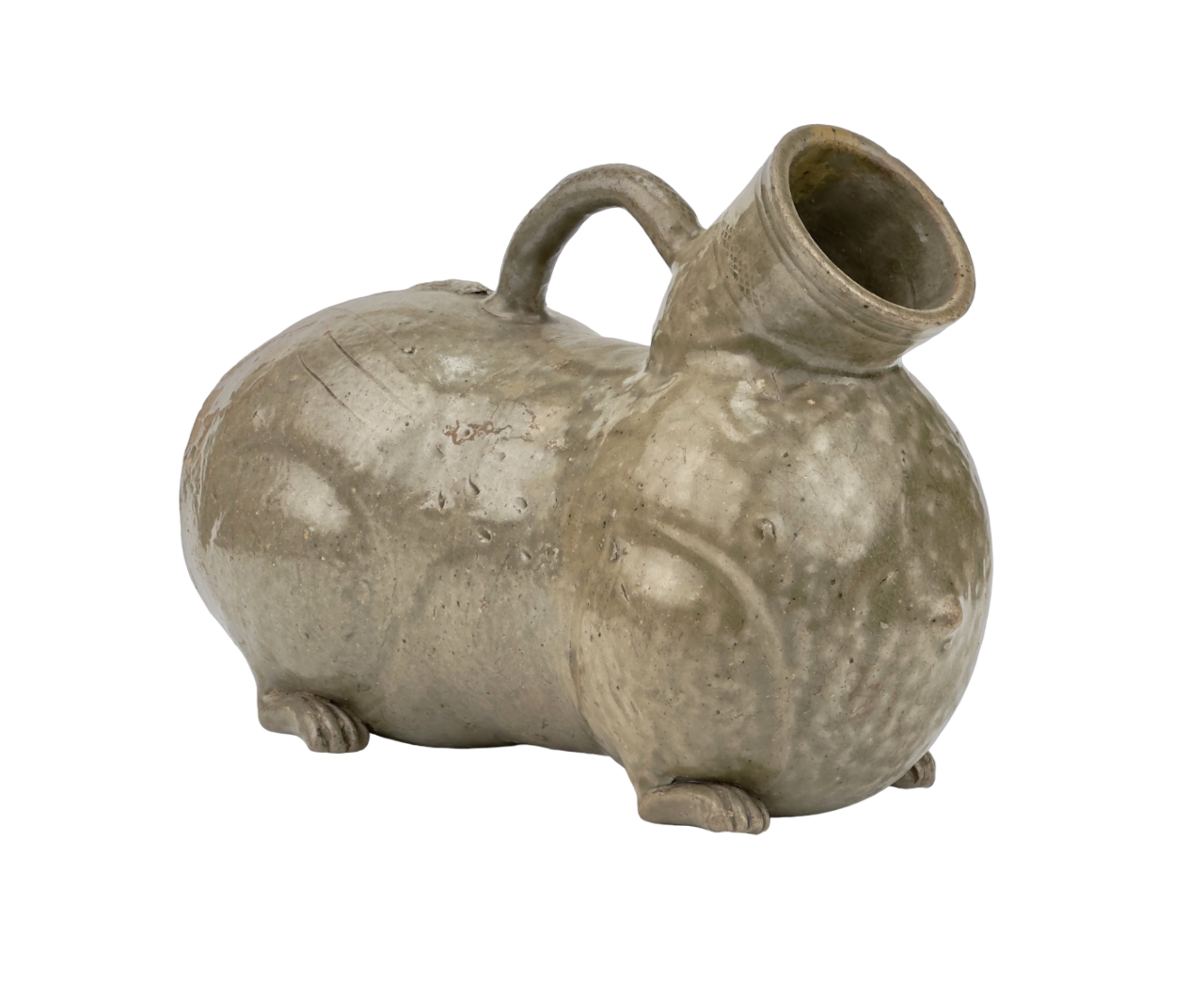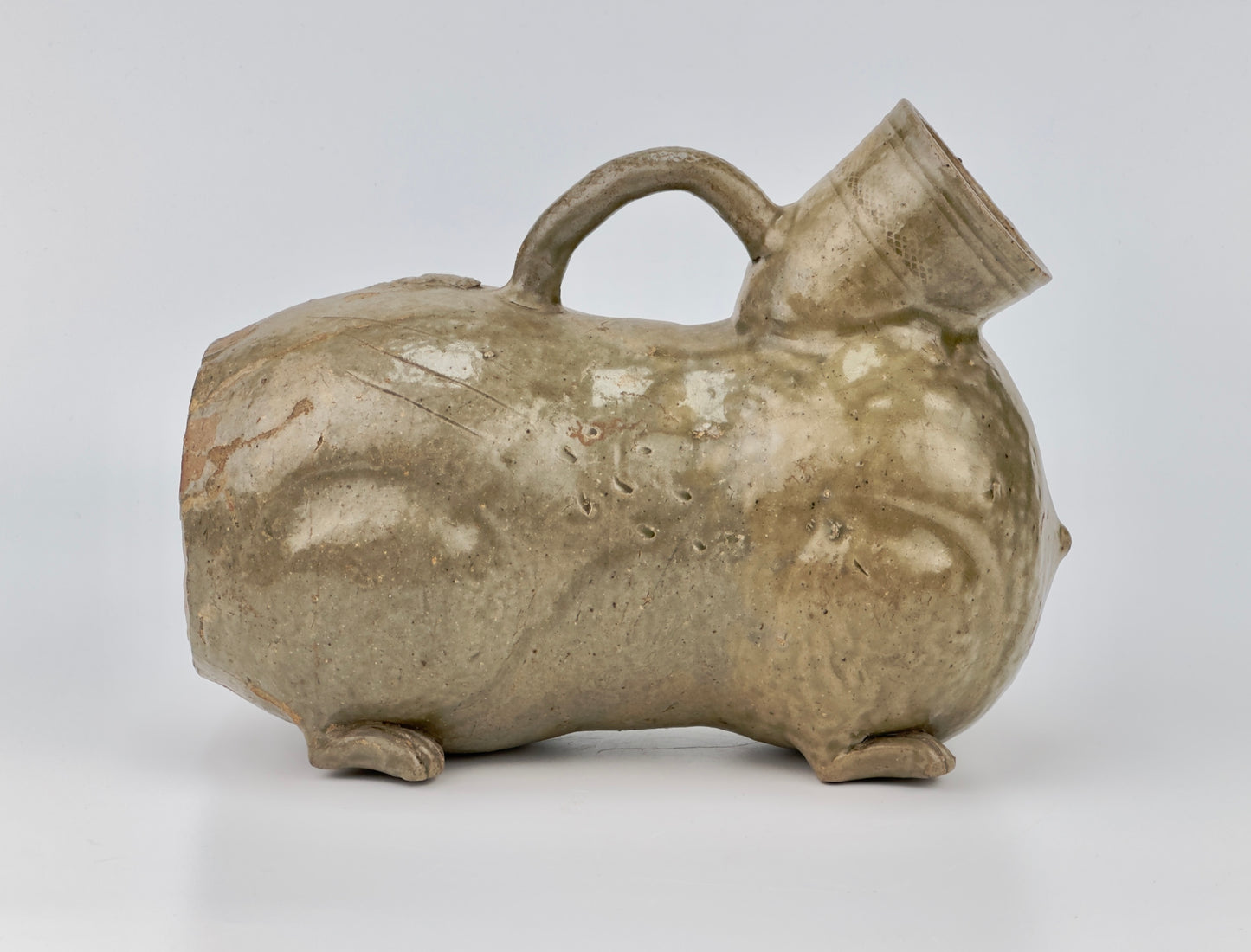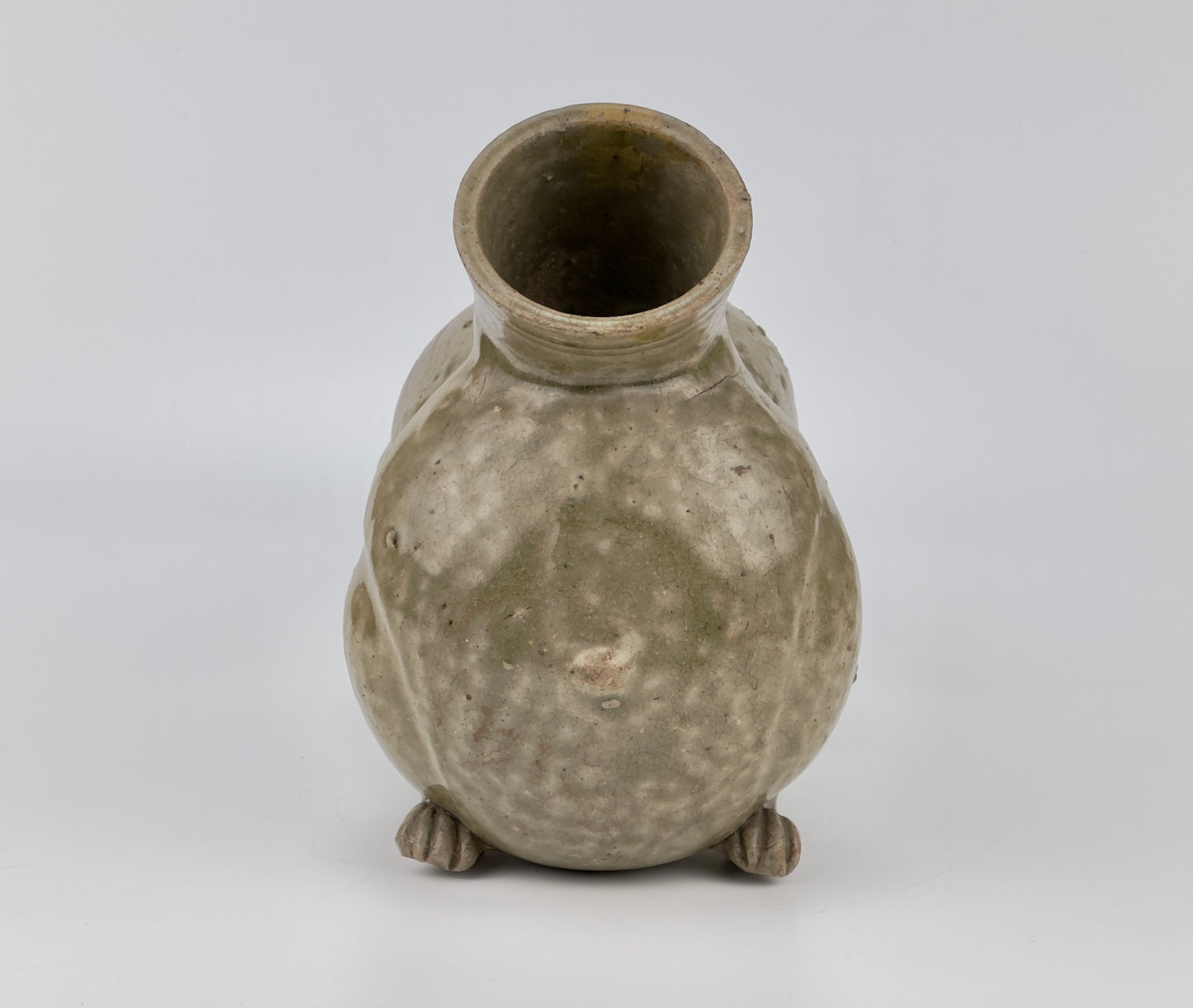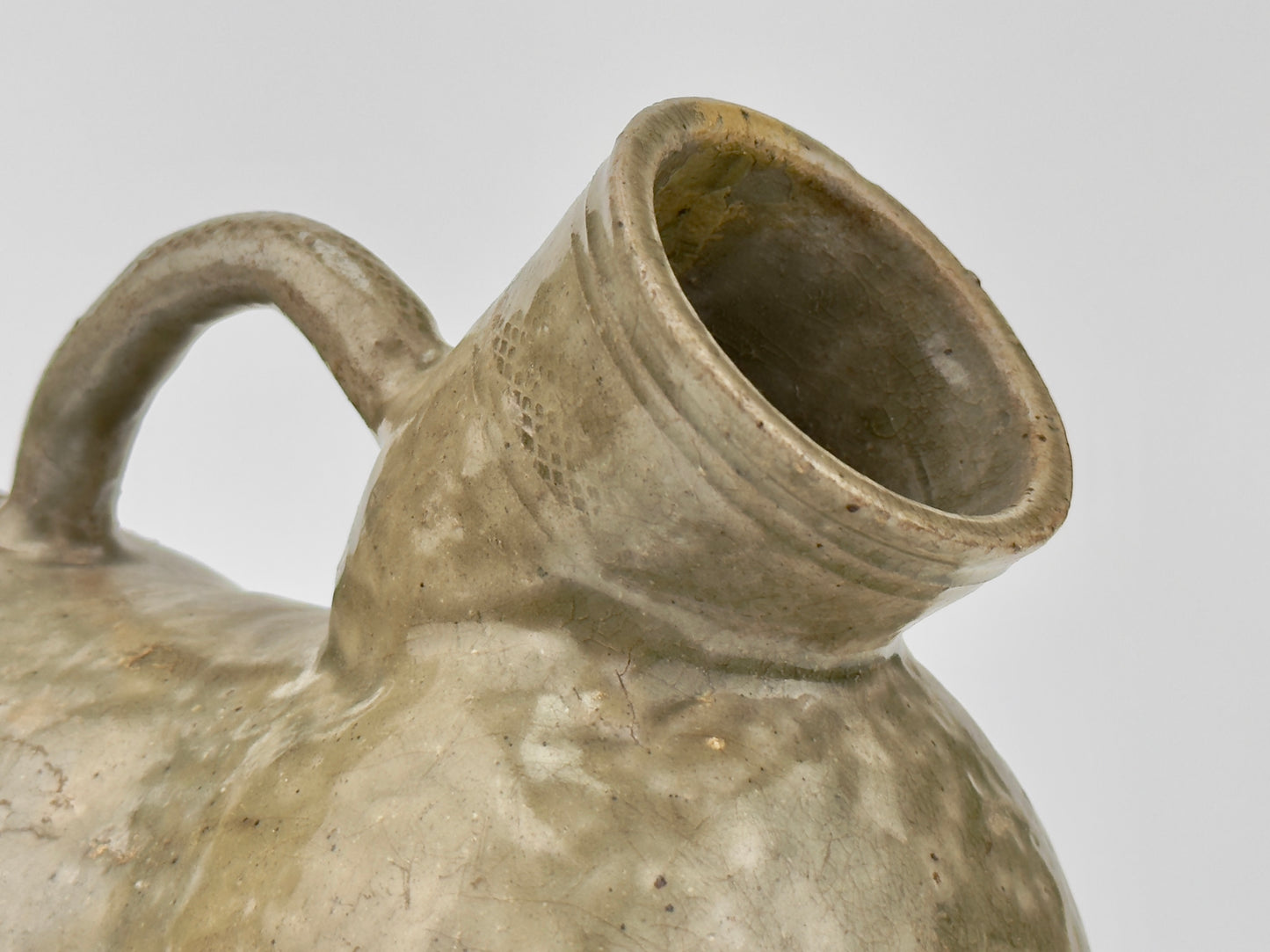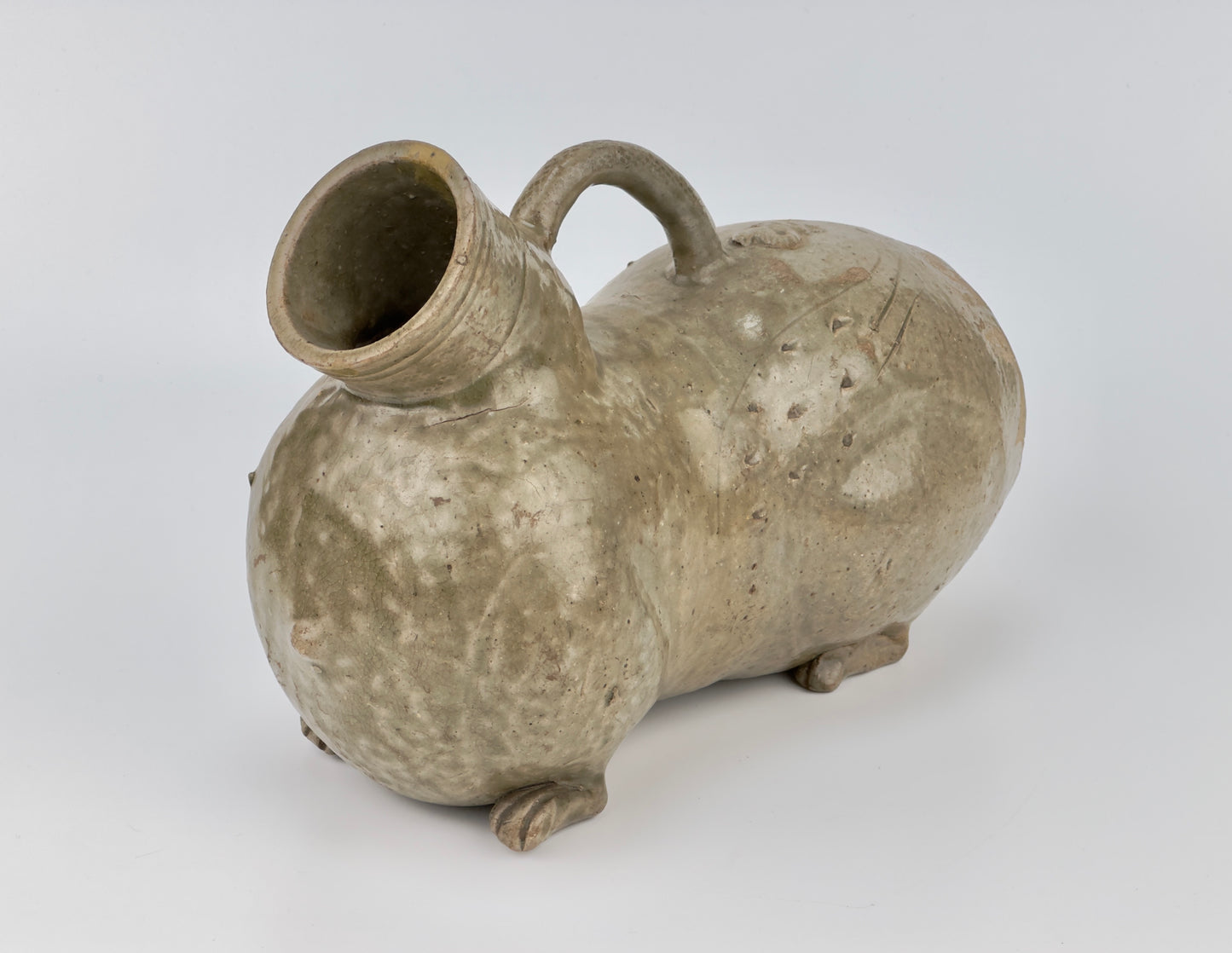AUA Oriental Art
Rare Yue Celadon-Glazed Figural Vessel, Western Jin dynasty (265-420)
Rare Yue Celadon-Glazed Figural Vessel, Western Jin dynasty (265-420)
Couldn't load pickup availability
This vessel is well-modeled as a recumbent winged lion with detailed decorative elements. The wings are incised on the sides. The whole piece is finished with a thin olive-green glaze.
This kind of figural vessel dates back to at least the Western Han dynasty, with the design fully developed in the Yue kilns of Zhejiang province during the 3rd and 4th centuries. Such zoomorphic forms became popular among the literati and were transformed into various functional objects like wine ewers and water pots.
Period : Western Jin Dynasty (266 - 316 AD)
Type : Figural vessel
Medium : Yue celadon(Stoneware)
Size : 19cm(Height) x 23cm(Diameter) x 12cm(Width)
Provenance : The piece was acquired in Hong Kong in late 1990s.
Condition : Excellent (Overall, it is in perfect condition; it is not clear whether the mouth area is oxidized or repaired)
Reference :
1) Sotheby's New York 17 March 2015 - Chinese Art Through The Eye Of Sakamoto Gorō – Ceramics Lot 33
(Price Range : 15,000 USD-20,000 USD / Type : Highly related)
https://www.sothebys.com/en/auctions/ecatalogue/2015/sakamoto-n09336/lot.33.html
2) Sotheby's London 17 May 2023 - A Journey Through China's History. The Dr Wou Kiuan Collection Online. Part I - Lot 30
(Price realised : 13,970 GBP / Type : Closely related)
https://www.sothebys.com/en/buy/auction/2023/a-journey-through-chinas-history-the-dr-wou-kiuan-collection-online-part-i/a-yue-celadon-glazed-vessel-huzi-western-jin
3) Ethnological Museum, Berlin, Germany - Pouring vessel in animal shape, China, Yue kilns, Zhejiang province, late Western or early Eastern Jin dynasty, 4th century
4) Sotheby's London 16 May 2018 - Important Chinese Art Lot 68
(Price realised : 50,000 GBP / Type : Closely related)
https://www.sothebys.com/en/auctions/ecatalogue/2018/important-chinese-art-l18210/lot.68.html
5) The MET - Accession Number: 1985.207 - Vessel in the Shape of a Tiger (Huzi)
(Type : Closely related)
https://www.metmuseum.org/art/collection/search/49534
* Yue Celadon
Yue celadon, also known as Yue ware, is a type of Chinese pottery with a celadon glaze, originating from the eastern Han dynasty (25-220 AD) in the Zhejiang province. The name 'Yue' comes from the Yue kilns which were among the earliest to develop the celadon technique. Yue ware is known for its jade-like glaze, which can range in color from bluish-green to olive green.
Yue celadon was highly regarded during its time and was the first Chinese ware to be imported in large quantities to the Middle East and Africa, significantly influencing the development of ceramics in those regions. The production of Yue ware continued to evolve, and during the Tang dynasty (618-907 AD), it became more refined with more complex shapes and decorations. By the time of the Song dynasty (960-1279 AD), it had greatly influenced other kiln traditions, leading to the development of the classic longquan celadon, which became one of China’s most famous ceramic products.
Yue celadon traditionally embodies elements of auspiciousness and good fortune in Chinese culture. The jade-like celadon glaze is often associated with longevity and health. Various motifs and shapes inscribed on the pottery frequently symbolize luck and prosperity. For example, lotus patterns may represent purity and immortality, while animal figures like the lion symbolizes power, courage, and strength. Lions are considered protectors that ward off evil spirits and bring forth good luck. Furthermore, Yue celadon wares were commonly used as tomb offerings in ancient China, believed to bring fortune and well-being to the deceased in the afterlife.




















